
Nissan Juke SUV (2010-2019) review
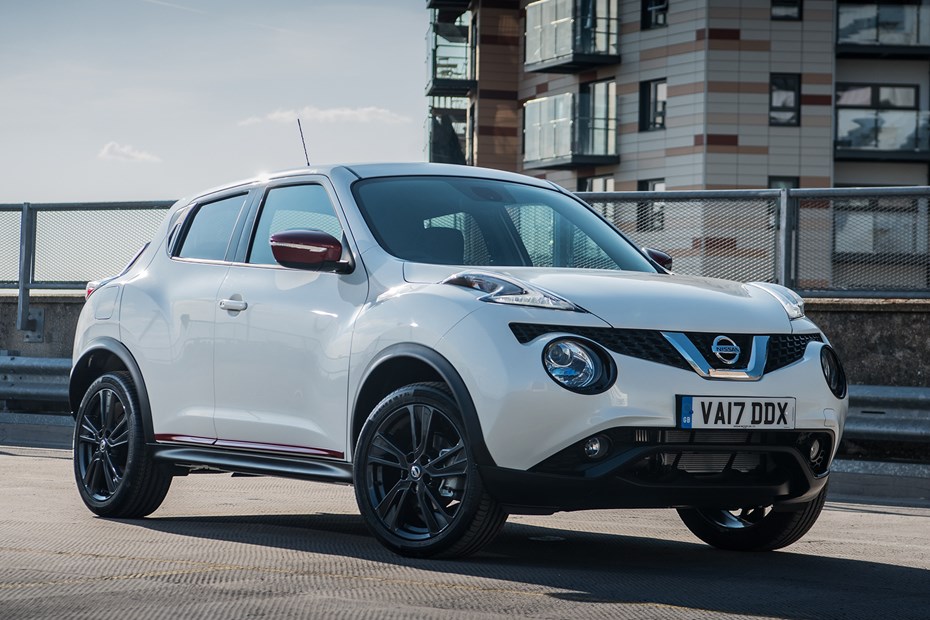
At a glance
| Price new | £13,070 - £24,425 |
|---|---|
| Used prices | £920 - £10,355 |
| Road tax cost | £20 - £315 |
| Insurance group | 8 - 26 |
Get an insurance quote with

|
|
| Fuel economy | 33.6 - 49.6 mpg |
| Range | 385 - 708 miles |
| Miles per pound | 4.9 - 6.3 |
| Number of doors | 5 |
| View full specs for a specific version | |
Available fuel types
Petrol
Diesel
Pros & cons
- Unusual styling still looks eye-catching
- Feels compact and useful around town
- Generous standard equipment list
- Firm ride on models with larger wheels
- Some interior quality issues
- Cramped and claustrophobic in the back
Nissan Juke SUV (10-19) rivals
Overview
The Nissan Juke is one of the cars that really popularised the genre of compact SUVs when it launched back in 2010. Riding on the success of the larger Qashqai, the Juke has sold well through the near-decade it’s been on sale and continues to be a very popular used car.
This is despite the market changing hugely – while at launch, it had barely any rivals, now it has many. Talented cars such as the Peugeot 2008, Renault Captur, SEAT Arona and Mazda CX-3 all compete with the Juke – and as more modern vehicles, they tend to beat it at its own game.
Nissan Juke Mk1 (2010-2019) buying guide
We’d avoid the 1.2-litre Juke outright, and there are better options if you want 4x4 or automatic such as the Suzuki SX4/S-Cross. Outside of cities a well-maintained 1.5-litre diesel in any trim level is a perfectly useful small SUV, and if you need to go into ULEZ often we’d grab a 1.6 DIG-T manual. The Juke Nismo is flawed fun, and will catch many drivers unaware – as a future quirky classic it’s worth finding a Juke Nismo for sale if you want the pinnacle of Nissan’s unusual small SUV.
Once you’ve decided that a used Nissan Juke is your next car, there’s good news – they are everywhere, and you don’t need to settle for a shabby one just because it’s convenient. For the cheapest Jukes, take some time to identify which trim and engine you want and get searching Gumtree, Facebook and eBay. If you live near a few small towns get out and check the local traders for stock.
For higher-end models check Parkers cars for sale to see what independent and franchised dealers have available. This should get you the lowest mileage, cleanest examples with potentially, some warranty – though it’s unlikely that any Juke Mk1s are still in the approved-used schemes.
Finally, ask colleagues and friends if anyone they know is considering selling or trading one in. This is a car so popular, you could buy one from the owner and have an honest picture of the reliability and condition. Not everyone is as aware or familiar with mechanical issues though, so here are the top ten tips for buying a good used Nissan Juke Mk1.
Nissan Juke Mk1 known faults and common problems
1. Wear, and tears – the Juke often works hard
Nissan Jukes are popular family cars, but they’re less practical and boxy than the Qashqai, being based on the smaller Micra. Look at the boot trim, bumper, rear seats and the door trim and sounding seals for damage and scratches, particularly the back of the front passenger seat for rips or tears caused by cramming the tip run or an IKEA excursion’s bounty aboard.
Fold the rear seat backs and peer into the gap at the base for rust near seatbelt mounts from spills or coming through from below.
2. Early petrol engine – 1.2 litre
The 1.2 sounds like it might be an cost-effective choice, reflecting the Juke’s compact dimensions. However, it’s prone to timing chain wear, uses oil (to the extent that it can run critically low between services if not checked and topped up) and isn’t very economical. You’ll be better off with a 1.6-litre if you want a petrol engine.
If a 1.2 is the only choice, or you already own one, listen for early signs of rattling near the left side of the engine when looking at the front of the car, keep an eye on the oil level, and try to get it serviced more frequently than the official intervals.
3. Automatic Juke – CVT or Xtronic
Two-pedal Nissan Jukes use a CVT automatic gearbox, sometimes branded Xtronic. This should be serviced every 30,000 miles with a fluid change. Some Nissan dealers claim the gearbox is sealed for life (which is true, if you don’t change the fluid the gearbox will fail), but realistically the fluid should be changed as often as you can afford to as the transmission filters are extremely involved to replace.
If the gearbox shows any errors, judders, makes unusual noises, walk away. Some faults can be down to wiring damage, but we simply wouldn’t buy a Juke with a bad gearbox no matter how discounted it was. If those service receipts are in the history, though, it should be a good buy.
All 4x4 Jukes are fitted with this gearbox.
4, Four-wheel drive Jukes
Yes, there are four-wheel drive models – and it’s a sophisticated system with AWD-V torque vectoring mode for better grip on-road. It uses an electromagnetic wet-plate clutch to engage the rear wheels when needed. Vehicles that have been driven hard should have the differential fluid changed every 30,000 miles, but we would suggest that any Juke over 75,000 miles should have had at least one fluid change if you want the AWD system to keep working.
Listen for grinding, rattles or rumbling when driving which could indicate worn propshaft links or bearings, and check those gearbox sevices as well. The front differential works hard on the AWD Juke. This video explains the Juke’s AWD and AWD-V well.
5. Nissan 1.5-litre diesel engine
This is the most common Juke you will find, and it’s not a bad buy. Look for frequent services and listen for dry/squeaking bearing sounds near the belts. The timing belt should be changed at five years or 72,000 miles, but some have failed before that interval and owners recommend four years or 50,000 miles.
Fuel leaks are not uncommon, usually around the return line, so any smell of diesel should be investigated. It’s not a quick car, but if a Juke 1.5 diesel feels slower than similar cars you’ve driven it could have problems with the turbo or the diesel particulate filter.
Also bear in mind a pre-2015 Juke diesel is going to attract ULEZ or clean air zone charges.
6. Nissan Juke Mk1 manual gearbox – clutch
The Juke’s gearbox is generally robust, but the clutch pedal can stick to the floor due to failure of the master cylinder. Fixing it is not particularly involved but if the pedal feels sticky, sluggish to return, or drops to the floor with an unexpected change in resistance budget for repairs soon. Or, look for a different car for sale – there are plenty out there.
7. Nissan Juke 1.6-litre turbo (1.6 DIG-T or Nismo)
The Juke Nismo is a separate model, but most of the hardware is the same as the regular 1.6-litre turbo Juke, just tuned for more performance. Any slow response should be investigated in case it’s oil starvation to the turbo, and the pipework and wastegate controls can also give problems. The 1.6 DIG-T engine is generally robust, but the timing chain does stretch so on higher-mileage cars look for replacement in the history, and get a diagnostic computer to see if any codes are present.
By the time the chain is audibly rattling or slapping more damage may have occurred.
8. Suspension components
Overall the Juke is a firm-riding tall, but small, car so the suspension can take a lot of abuse over time. The usual listening for rattles and clonks will reveal bush wear, but you should look underneath and inspect the condition of the subframe as well. If it wallows, the dampers are tired – the Juke is not supposed to feel as roly-poly as its looks suggest.
Check tyre wear for uneven distribution, and don’t forget to look at the back suspension as well. Normal Jukes have a beam axle, 4x4 models have independent suspension with more bushes and links to potentially fail. Wear and tear replacement of bushes is perfectly sensible but look at the condition of the bolts and subframe – excessive rust will mean a big charge for labour and potentially, more replacement parts.
9. Nissan Juke Mk1 rust
Jukes showed signs of rusting early on, so it’s definitely worth checking a used one out thoroughly. Before looking at the car, check the MOT history online for any past advisories as these will give you specific areas to focus on.
On any Juke check the front suspension mountings under the bonnet, the sills, the subframes front and rear, and around the base of the windscreen. Look behind the rear bumper as well – shine a torch everywhere you can.
10. Gadgets and technology
Later Nissan Jukes are quite well equipped, so check everything works including reversing sensors, digital displays and the air conditioning. Don’t forget to check all the windows and locks – the Juke’s ‘hidden’ rear door handles can stick if not maintained. Wiring loom problems can cause ABS, traction control and other issues.
The tall driving position of the Juke also makes it a prime candidate for getting driven into – and stuck in – floods. Any sign of damp, staining or mystery twigs and branches trapped behind the bumper is a red flag as a flooded electrical system could corrode, introducing problems shortly after purchase.
What’s the original Nissan Juke like to live with?
Over the next few pages, we’ll review each aspect of the 2010-2019 Nissan Juke Mk1, taking into account its practicality, comfort, fuel economy and performance. If you’re short on time, you can also skip to our verdict page to see if we recommend the Nissan Juke as a good used car.



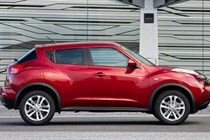
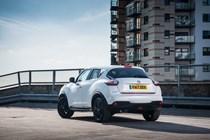
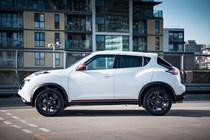
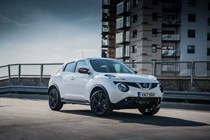
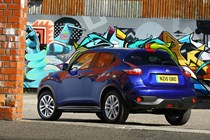
.jpg)
.jpg)
.jpg)
.jpg)
.jpg)
.jpg)
.jpg)
.jpg)
.jpg)
.jpg)
.jpg)
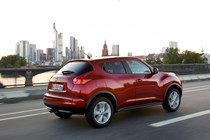
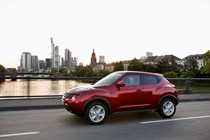
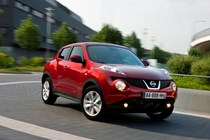
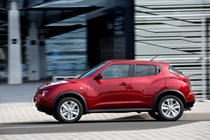
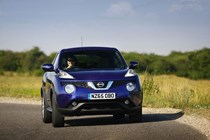
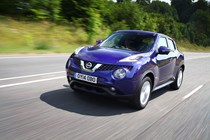
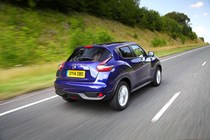
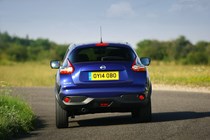
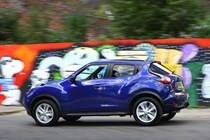
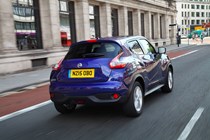
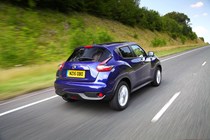
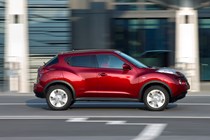
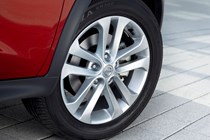
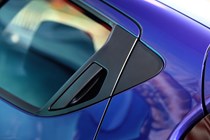
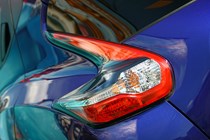
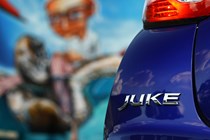
.jpg)
.jpg)
.jpg)
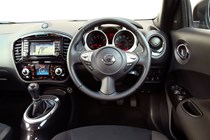
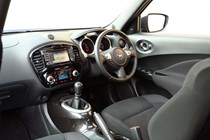
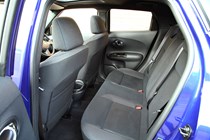
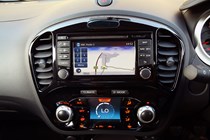
.jpg)
.jpg)
.jpg)

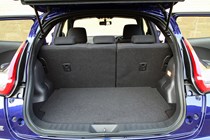
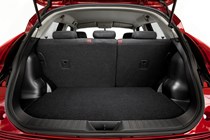
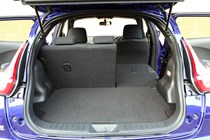
.jpg)
.jpg)
.jpg)
.jpg)
.jpg)
.jpg)
.jpg)
.jpg)
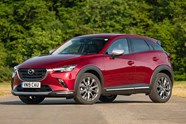
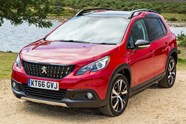







.jpg?quality=50)
.jpg?quality=50)
.jpg?quality=50)
.jpg?quality=50)
.jpg?quality=50)
.jpg?quality=50)
.jpg?quality=50)
.jpg?quality=50)
.jpg?quality=50)
.jpg?quality=50)
.jpg?quality=50)
















.jpg?quality=50)
.jpg?quality=50)
.jpg?quality=50)




.jpg?quality=50)
.jpg?quality=50)
.jpg?quality=50)




.jpg?quality=50)
.jpg?quality=50)
.jpg?quality=50)
.jpg?quality=50)
.jpg?quality=50)
.jpg?quality=50)
.jpg?quality=50)
.jpg?quality=50)